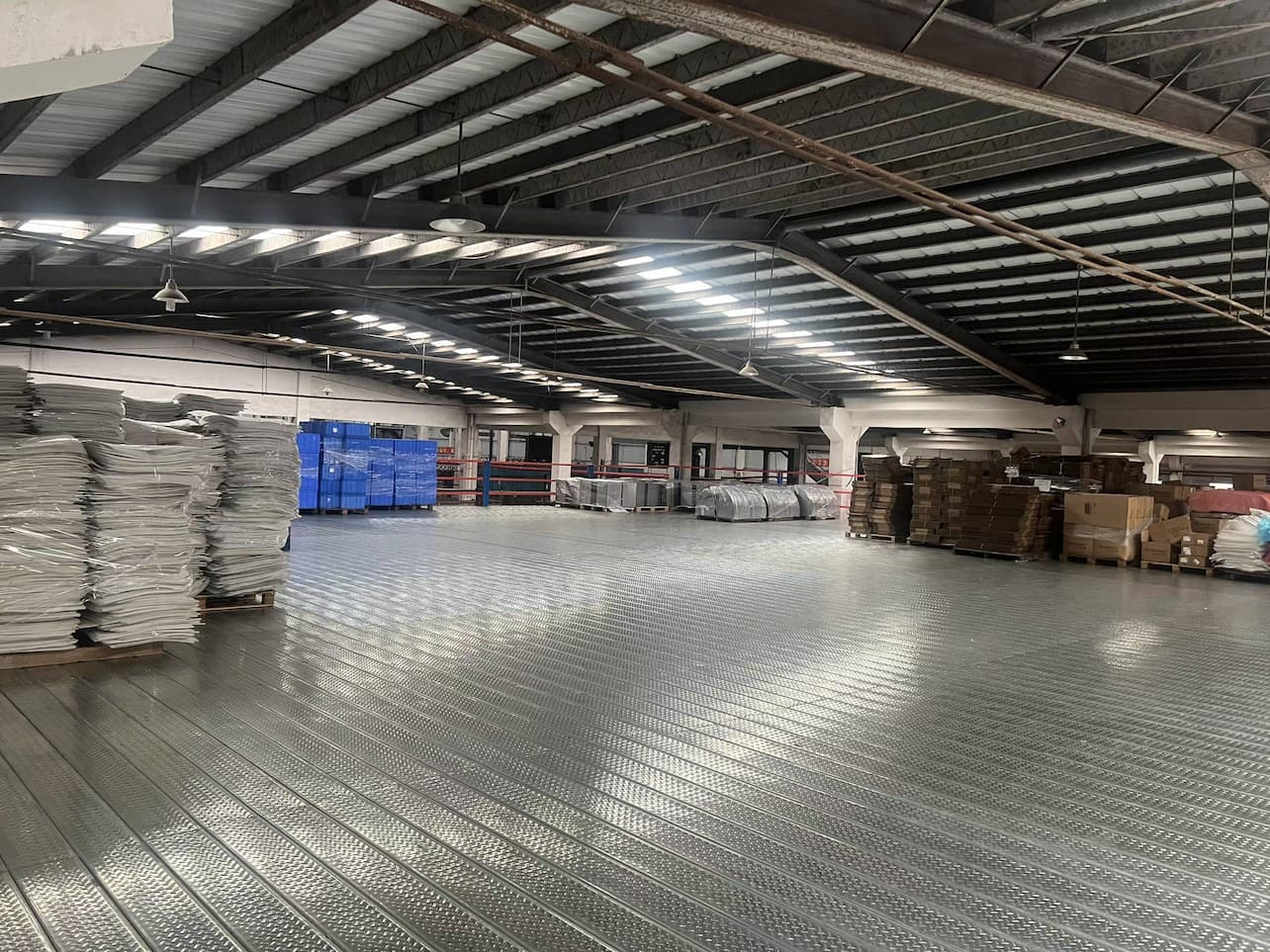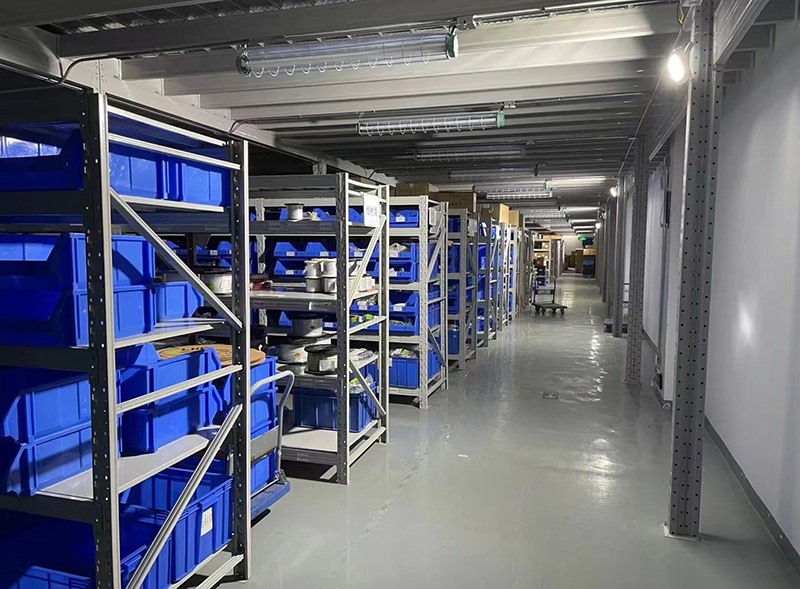In today's competitive industrial and warehousing environments, maximizing storage capacity and operational efficiency is paramount. A high density pallet racking system offers an innovative solution for businesses looking to optimize their space without expanding their physical footprint. This system is designed to store more pallets in a given area by reducing aisle widths and utilizing vertical space effectively. As supply chain demands grow and real estate costs rise, understanding the intricacies of a high density pallet racking system can help you make informed decisions that boost productivity and reduce costs. In this article, we'll delve into five essential aspects of these systems, providing a comprehensive overview to guide your selection process. Whether you're in manufacturing, distribution, or retail, this information will equip you with the knowledge needed to enhance your storage infrastructure.

A high density pallet racking system is a specialized storage solution engineered to maximize warehouse space by increasing storage density. Unlike traditional pallet racking, which typically features wide aisles for forklift access, high density systems minimize aisle space through innovative designs that allow for deeper storage and higher vertical utilization. This system often incorporates mechanisms such as drive-in, drive-through, push-back, or pallet flow racks, enabling multiple pallets to be stored in a single lane. The primary goal of a high density pallet racking system is to store more goods in a confined area, making it ideal for facilities with high inventory turnover or limited space. By reducing the number of aisles, businesses can significantly increase their storage capacity, often by up to 50% or more compared to conventional setups. This approach not only saves on real estate costs but also streamlines inventory management, as it allows for better organization of goods based on factors like seasonality or demand. When implementing a high density pallet racking system, it's crucial to assess factors like load weight, accessibility, and safety features to ensure optimal performance. Overall, this system represents a smart investment for any operation seeking to improve efficiency and scalability in storage.
When exploring a high density pallet racking system, it's important to understand the various types available, each suited to different operational needs. The most common variants include drive-in racking, drive-through racking, push-back racking, and pallet flow racking. Drive-in racking allows forklifts to enter the rack structure to place or retrieve pallets, making it ideal for storing large quantities of similar products with low selectivity. This type of high density pallet racking system is cost-effective but requires careful planning for load distribution. Drive-through racking is similar but allows access from both ends, facilitating first-in, first-out (FIFO) inventory management, which is perfect for perishable goods. Push-back racking, on the other hand, uses a series of nested carts that allow pallets to be stored multiple deep, with last-in, first-out (LIFO) retrieval; this system offers a balance between density and selectivity. Pallet flow racking utilizes gravity-fed rollers or wheels to move pallets from the loading to the unloading end, enabling high-density storage with FIFO control and minimal forklift interaction. Each type of high density pallet racking system has its own advantages and limitations, so selecting the right one depends on factors like inventory turnover, product variety, and budget. By evaluating these options, businesses can tailor their storage solutions to match specific logistical requirements, ensuring a smooth and efficient workflow.
Implementing a high density pallet racking system brings numerous advantages that can transform warehouse operations. First and foremost, it dramatically increases storage capacity by utilizing vertical space and reducing aisle widths. This means businesses can store more inventory in the same area, potentially deferring the need for expensive expansions or relocations. Another key benefit is improved efficiency: with fewer aisles, forklift travel time is minimized, leading to faster loading and unloading cycles. This efficiency boost often translates into lower labor costs and enhanced productivity. Additionally, a high density pallet racking system supports better inventory management by organizing goods in a structured manner, which reduces the risk of errors and improves order accuracy. Safety is also enhanced, as many high density designs include features like guard rails and reinforced structures to prevent accidents. Moreover, these systems are highly scalable, allowing companies to adapt to seasonal peaks or business growth without major overhauls. From a financial perspective, the return on investment can be significant due to reduced operational expenses and increased throughput. Overall, a well-designed high density pallet racking system not only optimizes space but also contributes to a more resilient and agile supply chain, making it a valuable asset in today's fast-paced market.

Designing and installing a high density pallet racking system requires careful planning to ensure it meets operational demands while maintaining safety and efficiency. Start by conducting a thorough site assessment, including measurements of available space, ceiling height, and floor conditions. This will help determine the optimal layout for the high density pallet racking system, such as the number of aisles and rack configurations. Key design factors include load capacity—ensuring the system can handle the weight and size of your pallets—and selectivity, which refers to how easily individual pallets can be accessed. For instance, if your business deals with time-sensitive products, a FIFO-based system like pallet flow might be preferable. It's also essential to consider integration with existing warehouse management systems (WMS) and equipment, such as forklifts, to avoid compatibility issues. During installation, work with experienced professionals to adhere to industry standards and local regulations, which often include seismic considerations and fire safety codes. Proper installation of a high density pallet racking system involves securing anchors, leveling components, and conducting load tests to prevent collapses or accidents. Additionally, factor in future scalability; the system should allow for easy reconfiguration as your inventory needs change. By addressing these aspects upfront, you can maximize the longevity and performance of your high density pallet racking system, ensuring it delivers consistent value over time.
Maintaining a high density pallet racking system is critical for ensuring long-term reliability and safety. Regular inspections should be conducted to check for signs of damage, such as bent beams, loose connections, or corrosion, which could compromise structural integrity. Establish a maintenance schedule that includes cleaning, tightening bolts, and replacing worn components to prevent unexpected failures. Safety is paramount when operating a high density pallet racking system; train staff on proper loading and unloading techniques to avoid overloading or uneven weight distribution, which can lead to collapses. Implement clear signage and aisle markings to guide forklift operators and reduce the risk of collisions. It's also advisable to use protective features like column guards and safety nets to minimize damage from impacts. Furthermore, monitor the system's usage patterns—for example, in a high density pallet racking system with push-back or drive-in designs, ensure that pallets are stored and retrieved in sequence to maintain stability. Conduct periodic safety audits and involve employees in reporting any issues promptly. By prioritizing maintenance and safety, businesses can extend the lifespan of their high density pallet racking system while fostering a secure working environment, ultimately protecting both personnel and assets.
Q1: What is the typical cost range for installing a high density pallet racking system?
A1: The cost of a high density pallet racking system can vary widely based on factors like system type, size, and customization, but it generally ranges from $50 to $200 per pallet position. This includes materials, installation, and any necessary accessories. For a detailed quote, it's best to consult with a supplier who can assess your specific needs.
Q2: How does a high density pallet racking system compare to traditional racking in terms of space savings?
A2: A high density pallet racking system typically saves 30-50% more space than traditional racking by reducing aisle widths and utilizing vertical storage. This makes it ideal for warehouses with limited floor area, as it allows for higher storage capacity without expansion.
Q3: Can a high density pallet racking system be integrated with automated warehouse technologies?
A3: Yes, many high density pallet racking systems are compatible with automation, such as automated guided vehicles (AGVs) or warehouse management software. This integration can further enhance efficiency by streamlining inventory tracking and retrieval processes.
Q4: What are the common safety risks associated with a high density pallet racking system, and how can they be mitigated?
A4: Common risks include overloading, forklift collisions, and structural failures. These can be mitigated through regular inspections, employee training, load limit enforcement, and installing safety features like guard rails and impact barriers.
Q5: Is a high density pallet racking system suitable for businesses with diverse product types?
A5: While a high density pallet racking system is often used for homogeneous products, it can be adapted for diverse inventories by selecting the right type, such as push-back racking for better selectivity. However, it may require careful planning to ensure easy access and efficient management of varied goods.
In conclusion, a high density pallet racking system is a versatile and efficient storage solution that can address modern warehousing challenges. By considering the factors outlined in this article, you can make an informed decision that aligns with your business goals. If you have more questions, feel free to reach out to industry experts for personalized advice.
 Wechat
Wechat
 Whatsapp
Whatsapp